#hollywood movie box office collection
Explore tagged Tumblr posts
Text
Historic Box Office Success, Moana 2 Smashes Records



#moana 2#animation#cartoon movies#the rock#rock#hollywood#celebs#actress#beauty#celebrity#hollywood gossips#classic hollywood#box office hits#box office collection#box office success#box office news#hollywood celebrity#hollywood movies#movies#film#records#movie review
5 notes
·
View notes
Text
Deva Box Office Collection Day 5: Worldwide Earnings & Budget Analysis
Introduction:
Deva, the latest action-packed thriller, has been creating waves at the box office since its release. Starring a stellar cast and directed by a visionary filmmaker, the movie has captivated audiences worldwide with its gripping storyline, high-octane action sequences, and powerful performances. As the film completes its fifth day in theaters, let’s dive into its box office collection and budget analysis.
Box Office Performance (Day 5):
Deva has shown remarkable growth in its collections over the first five days, with strong word-of-mouth and positive reviews fueling its success. Here’s a breakdown of its day-wise earnings:
Day 1 (Opening Day): $8.5 million (Worldwide)
Day 2: $9.3 million
Day 3: $10.7 million (Weekend Peak)
Day 4: $7.4 million
Day 5: $6.8 million
Total Worldwide Collection (5 Days): $42.7 million
Regional Performance:
Domestic (India): $28 million
Overseas: $14.7 million
The film has performed exceptionally well in metro cities and international markets, particularly in the UAE, the USA, and Australia.
Budget Analysis:
The estimated budget of Deva is around $30 million, including production and marketing costs. The film has already crossed its breakeven point, making it a profitable venture for producers and distributors.
Production Cost: $22 million
Marketing & Promotions: $8 million
Factors Contributing to Its Success:
Engaging storyline with a perfect blend of action and drama
Strong performances by the lead actors
High production values and stunning visuals
Effective marketing strategies and global promotions
Predictions for the Coming Days:
With steady weekday collections and strong weekend prospects, Deva is expected to maintain its momentum. The film might cross the $60 million mark globally within the next few days if it continues to attract audiences at this pace.
Final Verdict:
Deva has proven to be a box office success, winning hearts with its compelling narrative and top-notch performances. Its impressive earnings within just five days indicate that it will continue to dominate the box office charts for weeks to come.
Want to Watch More Hits Like Deva? Explore an extensive collection of blockbuster movies on YoMovies. Enjoy seamless streaming, high-quality content, and the latest films all in one place!
Source URL:- Deva Box Office Collection Day 5: Worldwide Earnings & Budget Analysis
0 notes
Text
How are Movie streaming platforms changing how we watch movies?
In this digital age, the rise of movie streaming platforms has transformed how we watch movies. The new Movie streaming platforms have revolutionized the way movies are watched now. This means that the experience and the style of watching movies have changed.
#Latest movie releases#Box office collection#Best movie reviews#Movie streaming platforms#Top Hollywood movies#Box office predictions#Film industry news#Movie rankings 2024#Oscar winning movies#Best thriller movies#Upcoming blockbuster movies#Bollywood box office
0 notes
Text
0 notes
Note
I met this man at a bar recently and he was absolutely gorgeous. He’s here shooting a movie but otherwise wasn’t into me at all. Could you possibly make me into an even bigger hotter more muscular movie star so that he’ll notice me and want to get together?
Well… You're not particularly good-looking or charismatic now… No wonder the first contact wasn't particularly successful. But what do you expect with your baggy sweatshirt and ill-fitting jeans?
After the nasty rebuff you received, you're sitting alone at the bar again, looking into your… Whiskey? When did you order a whiskey? You notice that two girls in the corner keep looking over at you, whispering, looking and giggling. One of them gets up and walks towards you. You straighten up, smile at her, she turns bright red, giggles and asks if she can take a selfie. She has an adorable Indian accent. And you reply in Hindi that it would be a pleasure and an honor. She takes the selfie, gives you a kiss on the cheek and runs to her friend, giggling. You finish your whiskey and wave the bartender over to pay. He replies that it would have been an honor to serve you and that the drink is on the house, of course. And a second one if you like. Your crush looks at you questioningly. You accept the second whiskey with thanks and toast the actor. He toasts back and frantically thinks about how he knows you.
It's getting warm in the bar. You unbutton two buttons on your shiny shirt. Like the trousers, which are made of a similar fabric, the shirt fits like it was painted on your body. The bar is getting fuller. Of course, many guests are whispering about your crush. But even more stare at you, want a selfie or ask for your autograph. Many of your fans are glowing-eyed and black-haired. Lots of Indians. Your crush asks you if you're an actor too. The Indian beauty who is taking a selfie with you, pretending to give you a kiss, almost collapses with laughter. She opens Instagram and shows your crush an Instagram account. Your Instagram account. 58 million followers! He turns pale. Very pale. Your skin turns a deep brown. You answer his question with a heavy Indian accent. Yes, you're an actor too. Bollywood is productive. And you are one of the biggest stars. Four to six films a year. And each one is a box office hit. Your fitness videos? Top sellers! Your own fashion collection? A must-have in Delhi, Mumbai and Calcutta. And now also in London and Berlin. You smile your hundred-million-rupee smile. It leaves him speechless. But the bulge in his pants speaks its own language…

For the two young men who ask for a selfie, you throw yourself back into the cool macho pose that half of India loves you for. You give the bartender a 100-pound note as a tip, put on your leather coat and tell your colleague "Savoy, Charlie Chaplin Suite. Ask for John Rolfe". You don't need to look around to know that he's rushing to pay and grab his jacket. Tonight will be a close exchange between Hollywood and Bollywood.
Pic found @maxx-magnum
116 notes
·
View notes
Text
Meagan Good Reunites With ‘D.E.B.S.’ Co-Star Sara Foster & Director Angela Robinson For 20th Anniversary, Jordana Brewster Calls For Sequel
by Glenn Garner - Deadline, June 23, 2024
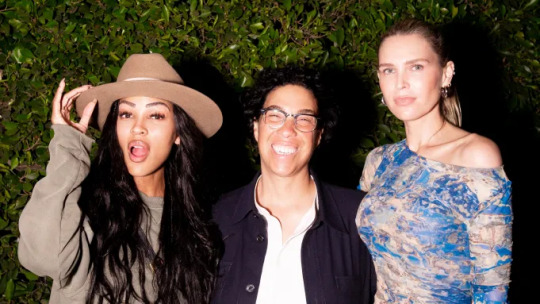
After 20 years MIA, the D.E.B.S. (Discipline, Energy, Beauty, Strength) are back together again and teasing a potential (not-so-secret) mission.
Meagan Good and Sara Foster, who starred together in 2004’s D.E.B.S., reunited Saturday night with writer and director Angela Robinson to celebrate the sapphic cult classic’s 20th anniversary with a Cinespia screening at Hollywood Forever Cemetery, in partnership with LA Pride.
“This film, for me, was an opportunity to do something different,” said Good as they introduced the film. “And then it became something where, now when people come up to me and they say, ‘Oh, I loved this movie’ or ‘this movie really inspired me’ or ‘made me feel seen,’ it wasn’t just an opportunity to do something different. It was an opportunity to be a part of something that’s important and fantastic.”
Foster echoed her co-star’s sentiments. “I will say that in 20 years, a lot of good things have happened to me in my life,” she said. “And to this day, one of the best things is people coming up to me and saying, ‘D.E.B.S. made me feel comfortable being who I am. D.E.B.S. made me realize who I am, who I want to be.’
“And it’s happened consistently for 20 years. So, I’ve done a lot of really shitty movies and a lot of shitty TV shows, but this is a movie that made a difference, probably the only thing I ever did that made a difference, at least in the movie business,” added Foster.
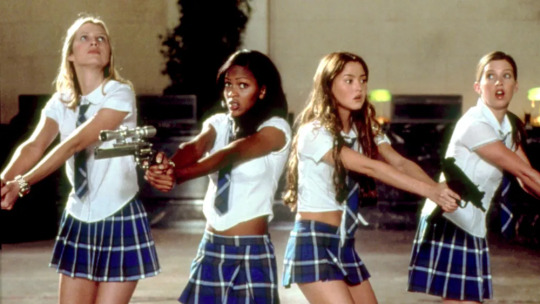
Foster starred in the action comedy — based on Robinson’s 2003 short of the same name — as Amy Bradshaw, a gifted recruit at a top-secret women’s paramilitary academy. During a mission to take down the illusive super criminal Lucy Diamond (Jordana Brewster), Amy develops an attraction to the enemy and finds her loyalties tested.
Although the movie’s marketing watered down its LGBTQ themes and it ultimately grossed less than $100,000 at the box office, D.E.B.S. has gone on to cult status among its intended fanbase.
“We made this so long ago, and my goal, our goal collectively was, I just wanted to see a teen movie that I wish I had when I was a teenager,” recalled Robinson. “And we had such a blast making the movie, and we had a great premiere at Sundance. And then the movie came out and totally flopped.
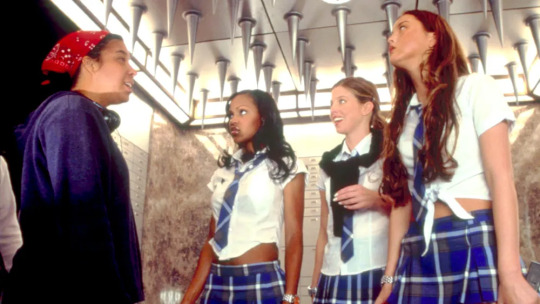
“But here’s the thing, I was so bummed out because I was like, ‘It’s not gonna get to the audience that I wanted to see this movie.’ And then you guys went and found it. Then somebody would tell me ‘yeah, I rented it in the video store.’ And I was all mad at the time … that they weren’t advertising it as a gay movie. But then it became this kind of underground thing where people would tell me they rented it at the video store or passed it or watched it on TV or something like that. And then it’s grown into this today. So, I want to say thank you so much.”
Robinson also thanked her wife of 25 years, Alexandra Kondracke, “who told me not to take the script and stick it in the drawer like I was going to,” as well Sony Screen Gems’ Clint Culpepper and Stacy Kramer, “because I can’t believe anyone gave us money to make this, but you did, and it’s amazing.”
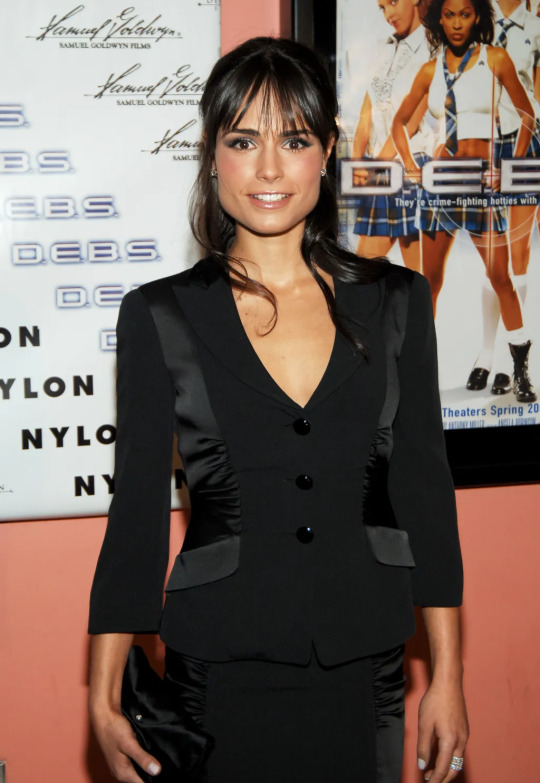
“But mostly, I want to thank all of you for coming and being here and supporting D.E.B.S. because a bunch of people have come up to us collectively, and they said, ‘D.E.B.S. changed our lives,'” added Robinson. “And that’s incredibly gratifying to see all these years later.”
Although Brewster was in New Zealand and unable to attend the reunion, she graced her friends and fans with a video message, in which she imagined an “older, wiser Lucy Diamond. Has she learned her lesson? I don’t know… Probably not.”
“Have fun. I love you guys. I’m with you in spirit,” added Brewster. “And bug Angela about making a sequel, please.”
39 notes
·
View notes
Text

Dan Stevens in an exclusive interview (Google translated)
Hollywood star Dan Stevens can currently be seen in the blockbuster “Godzilla x Kong: The New Empire” in cinemas. The film is currently topping the box office charts and is number one worldwide. We met the charismatic actor in Los Angeles and talked to him about his current film, his next two projects and his choice of roles.
April 5, 2024 by Grace Maier
Can you share with us your first reaction when you were offered a role in Godzilla x Kong: The new empire? It's always a pleasure to work with the same people several times, but this time it was extra special as Adam Wingard, the director, is an old friend. I was also invited to play with an even older friend, Rebecca Hall, as well as Brian Tyree Henry, who I have known and admired for years. It felt like I was being asked to play with friends.
What was it like entering the universe of these iconic monsters? Did you have any ideas or expectations? It's a fun task to be asked to stretch one's imagination to the size of such cinematic titans! I've worked with CGI on an epic scale before, so it wasn't too foreign, and I was surprised at how many practical locations we had.
How did you prepare for your role in this blockbuster? Were there any unique challenges or exciting moments during filming? It was really exciting to shoot in the Australian outback, in the Daintree rainforest - this incredible ancient jungle. That sense of adventure on the way to work every day, passing crocodiles along the river banks, waiting for pythons to be removed from the set, really fueled the mood for the Hollow Earth walk in the film.
“Godzilla x Kong: The new empire” promises to be an epic clash. Without giving too much away, can you give us a hint as to how your character fits into the plot? Trapper is initially brought in to help Kong with his toothache - he is a vet for all Titan creatures - and is then approached by Rebecca Hall's character, Dr. Andrews, invited to the mission. He's a kind of happy, carefree Han Solo type, good to have around, tirelessly optimistic and impressed by little.
The film contains a lot of CGI and visual effects. What was your experience like acting in such an environment and how did it differ from previous roles? I've worked with this type of thing before so it wasn't too scary. I actually really enjoy working with a VFX team and helping to create something using our entire collective imagination. It's truly incredible to see what they achieve long after you've left the process.
Were you a fan of the Godzilla or Kong films before joining this project? How does it feel to be part of their legacy? I feel like I've known these characters my whole life: they are such an integral part of cinema history. I've loved seeing them in all their different iterations over the years and of course being asked to perform alongside them - and even fix their teeth - is a huge honor!
The film will have some intense action scenes. Can you describe one of your most memorable moments while filming these scenes? While it's not the most intense scene, the way my character is introduced - rappelling from a floating vehicle into Kong's mouth to perform large-scale dental work - was one of the more exciting stunts I had to do!
How do you think fans of the franchise will react to Godzilla x Kong: The new empire? What can they look forward to most? I want them to enjoy the ride! You'll see things you've never seen before and meet some fantastic new creatures and characters, but also maybe some familiar fan favorites...
You also have the film "ABIGAIL" coming out in April. Can you tell us a little about filming and what audiences can expect? This is a completely different kind of thrill! Essentially, it's a vampire ballerina heist movie - you know the kind - directed by the Radio Silence guys, Tyler Gillett and Matt Bettinelli-Olpin, who specialize in a particularly wacky brand of horror-comedy that I love .
“CUCKOO” will also be released in the summer. What particularly interested you about this film? Tilman Singer, the director, is a truly exciting new voice in cinema - he has a very distinctive style that is so captivating and artfully disturbing. I was also very curious to work with Hunter Schafer, the lead actress of Cuckoo, who is such a bright and brilliant artistic soul.
Your career is so dynamic. How do you go about choosing a role? I crave variety, challenge and surprise, so I'm often guided by the search for those things, but it can also be a certain quality in the writing, a desire to work with certain directors or actors. It's different every time!
#godzilla x kong: the new empire#godzilla x kong#abigail 2024#cuckoo 2024#abigail#cuckoo#dan stevens#l'officiel liechtenstein#interview#godzilla x kong spoilers
33 notes
·
View notes
Text
The Voltron movie is finally moving forward with filming dates confirmed, sets being built, and a cast being rounded out, with a mostly unknown newcomer and Henry Cavill, fresh off of bashing his head into a glass ceiling trying to get a Warhammer 40k series going at Amazon. (I would not be surprised if that project stalled out and he was offered a lead role in Voltron as a compensation prize so he can earn some money).
And for reasons I'll never fully comprehend, I'm back on the Hopium that this will be a standout example of a Western-made mecha property, combining Japanese-style super robots with Hollywood budgets to create a billion-dollar hit at the box office.
This is after the West's near endless stream of failures at the genre, usually doomed by writers up their own asses who view anything with robots more complicated than a refrigerator with two legs and some guns as a glorified toy commercial and therefore immoral and needing to be changed. Take for instance Legendary Defender's writers admitting in interviews they fought to use Voltron less, hence the show bombing and WEP happy to erase it from the collective internet (as it deserves). Or gen:Lock writing in the first page of its artbook and inscribing in a plaque above the head writer's office "This show is about the characters". Its production company, Rooster Teeth, ceased operations in May, and while its sister show RWBY was sold to Viz Media for future use, gen:Lock is still for sale from Warner Bros, although I don't see anyone coming out to buy it.
So far, Amazon MGM and WEP, Inc are doing all the right things for this movie, whether purposefully or coincidentally. They're letting the rights to Legendary Defender on Netflix expire two years before the movie's targeted release date of 2026 so the show vanishes from the internet and none of the actors, directors, or crew have to hear the phrases "Klance", "Sheith", "fiction affects reality", or "Gays In Space." They're hiring Henry Cavill, a guy who still has a fair amount of sympathy from the general public for his ill-fated roles as Superman (being caught square in the Snyder drama) and Geralt of Rivera (where the longtime fan of The Witcher books and games objected to the considerable liberties taken by the show's writers and was shown the door), which as a bonus for Bob Koplar, will probably attract the Snyderbros to the super robot movie and provide a very different tenor to the fandom than VLD had, chasing that rapidly dwindling fandom out the door. Bob Koplar has spoken repeatedly at VoltCon conventions about wanting to capture the spirit of the original 80s series while repeatedly expressing distaste for Legendary Defender.
The main issues at this point are "What is the plot?" and "How big is the budget?" The rumor as per those same VoltCon panels where Koplar flat out said Dreamworks "did not get Voltron" is that we will be getting five new characters, rather than the usual crew of Keith, Lance, Pidge, Hunk, Allura, and Sven/Shiro. I'm all in favor of this because it means one less connection to Legendary Defender, but it also probably means the movie will be about an alien invasion of Earth with our super robot the only thing able to repel the invaders. As for the budget, we don't know that either, but given that the rights started a bidding war between Amazon MGM as well as other big companies like Warner Bros, Paramount, and Universal (Netflix was reportedly uninterested because of how badly VLD went) as well as reports from Australia citing shortages of set builders because of the high demand for them at the Voltron set, we could potentially be looking at a blockbuster with a blockbuster budget.
I'll guess we'll know soon. Filming is scheduled, as per Production List to begin at the end of December, which means over the next two months we'll probably see the rest of the cast rounded out and get a hard number for the budget. But there might be a reason to hope that the series is a super robot movie that the West deserves, and not another VLD or gen:Lock styled trainwreck from writers who don't get it.
#voltron#voltron movie#live action voltron#rambles#rawson marshall thurber#henry cavill#amazon mgm studios#bob koplar#voltron legendary defender#vld#keith#lance#shiro#mecha
12 notes
·
View notes
Text
“Barbenheimer”—the collective celebration around the release of the Barbie and Oppenheimer movies—has collided with the wedding industrial complex. That’s not a joke. According to a Variety story this week, people are planning on taking their friends and family, prenuptials, to see the two films as a double feature. People who aren’t getting married are planning similar movie-watching marathons. It’s the kind of viral cultural moment marketing teams dream of. It also feels like a sign of the end times.
This sense of dread doesn’t stem from the public’s collective yearning to absorb stories about a Mattel doll and the development of atomic weapons at the same time. It’s because this weekend promises the kind of “let’s all go to the movies!” hype (and box office haul) that cinemas haven’t seen since before the Covid-19 pandemic shut theaters down—and it’s happening as Hollywood is going on strike.
This week, WIRED rolled out a series of stories detailing what we believe the future of entertainment might entail. The purpose was to look at how all aspects of culture, from books to video games to YouTube, could be impacted by advancements in technology. As we worked on it, though, something happened: Contract talks between Hollywood studios and the writers and actors unions began to break down. One of the major sticking points in those negotiations was the use of artificial intelligence in movie- and TV-making. Suddenly, as Madeline Ashby wrote in her essay this week, the world was in the midst of Hot Strike Summer.
Then, Hot Strike Summer slammed into the Barbenheimer moment. Once the Screen Actors Guild—American Federation of Television and Radio Artists, or SAG-AFTRA, called for a walkout, stars could no longer smile on red carpets without looking like scabs. The stars of Oppenheimer walked out of the film’s London premiere when the strike began. The cast and filmmakers behind Barbie, which premiered before SAG called for a strike, voiced their support. Soon, “This Barbie Is Now on Strike” became the headline, transforming one of the world’s most well-known figurines into Norma Rae. The marquee at my local theater in Brooklyn listed both movies alongside the phrase “Atomic Kenergy,” while The New York Times asked, “Can I Watch ‘Barbenheimer’ Despite the Hollywood Strikes?” (Short answer: Yes.)
To that end, the strikes will not affect Oppenheimer or Barbie’s opening weekend box office numbers. Earlier this week, AMC Entertainment reported that some 40,000 people had bought tickets for both films, and together they’re estimated to make around $150-200 million domestically, with Greta Gerwig’s send-up of the Mattel doll bringing in a bigger chunk than Christopher Nolan’s historical drama about the man behind the atomic bomb.
But what matters is what happens after this weekend. By all accounts, Hot Strike Summer seems poised to last beyond one season. Even before SAG went on strike, studio sources were telling reporters that the plan was to let the strike “drag on until union members start losing their apartments and losing their houses.” In response to that, actor Ron Perlman took to social media to say “listen to me, motherfucker—there’s a lot of ways to lose your house.” He later walked that back, but when Hellboy enters the chat, you know it’s not going to end gently.
The longer writers and actors are on strike, the bigger the hole next summer or the summer after that, when the movies that would be filming right now aren’t ready. (Deadpool 3 and the sequel to Mission: Impossible—Dead Reckoning Part One, for example, are both currently on hold.) Cinemas have been bouncing back in the years since Covid restrictions were lifted and people began feeling comfortable in movie houses again. A lackluster year brought on by a dearth of films could prove detrimental.
Yesterday, Comic-Con International began in San Diego. Typically, or at least before the pandemic, the event has been full of panels with flashy stars promoting their next big movie or TV series. As long as SAG is on strike, those celebs won’t show. Some attendees will likely welcome the event’s return to its comics roots, rather than the Hollywood hype-fest it has become. But no matter what happens, it will be unlike any Comic-Con in recent memory. Maybe a little less plastic, but not fantastic.
37 notes
·
View notes
Text
A COLD LOOK AT CANADIAN HORROR IN BRANDON CRONENBERG’S ANTIVIRAL

When Americans think of Canada, they usually think of preternaturally-polite hosers sitting in igloos, drinking Molson or Labatt beer, watching hockey on the CBC as they dunk their Tim Hortons doughnuts in maple syrup, all the while dreaming of clubbing seals (much to Morrissey’s dismay). I don’t think Americans give much thought to Canada at all, and that’s okay. We’re not a threat to national security (despite our nationwide legalization of cannabis), we supply you with a steady stream of actors and comedians, and we’re your #1 economic trading partner, so what’s to worry about? Except that Canada concocts your nightmares, dear friends, and the irony is simply delicious: who would expect a bland nation-state of moose-loving people to be sinister sadists? It’s particularly omnipresent when watching Canadian horror films. Our film industry is, well, a speck of dust compared to the mighty Hollywood machine, but, occasionally, our celluloid chillers travel south of the 49thparallel and feast on your delicate minds. Since 1961’s The Mask (in 3D!), Canada has impacted the horror genre with its domestic terror: Black Christmas, My Bloody Valentine, Prom Night, The Changeling, Curtains, Blood and Donuts, Cube, Ginger Snaps, and more recent fare like American Mary, Pyewacket, and the Wolf Cop films. Who else would make a movie about an insane killer with a pickax terrorizing Moosehead-swilling Nova Scotia miners? Only in Canada, eh? This collection of Canadian horror helped inspire a new generation of talent to make big impressions with small budgets with such films as Beyond the Black Rainbow and Antiviral, the latter a film so American in its examination of celebrity worship, but at heart very Canadian, with a distinct connection to its filmic past.
In order to examine Antiviral, one cannot ignore the influence of Canada’s greatest and best-known filmmaker, David Cronenberg. With his over-sized glasses and gangly appearance, Cronenberg looks like an English major who shuns sunlight in order to read Angela Carter stories in a library basement, but his dark creativity has no equal. If the term body horror applied to any one filmmaker, it’s Cronenberg. With his full-length debut, Shivers (made with Canadian government money—”screw you, taxpayer”, as the Kids in the Hall used to say), Cronenberg created a nightmare vision of an isolated luxury Montréal apartment tower gone awry; not unlike J. G. Ballard’s novel, High-Rise, but with a parasitic-organism twist. Despite its low-budget exploitation origins, Shivers was more than just schlocky fun—it heralded the arrival of a unique cinematic voice in a national film industry known more for documentaries than narrative cinema. With each film, Cronenberg expanded his obsession with the human body and technology, culminating with Videodrome (1983) and The Fly (1986), arguably his two most acclaimed films. Cronenberg’s breakthrough in the USA helped fellow Canadian filmmakers like Atom Egoyan, Patricia Rozema, Bruce MacDonald, Guy Maddin, Lynne Stopkewich, and a handful of others impress the American independent film community; Canadian film budgets were on par with the likes of Jim Jarmusch and Hal Hartley. By the ’90s, Cronenberg moved away from horror, but horror never truly left him: from adaptations of two of his literary heroes, William S. Burroughs’ Naked Lunch (1993) and J. G. Ballard’s Crash (1996), to eXistenZ (1999), Spider (2002), A History of Violence (2005), and his last (and possibly final) film, Map to the Stars (2014). Outside of The Fly, his films have never electrified the box office, but they have always been profitable worldwide, allowing him to remain in Toronto with his loyal film crew; a rarity in an industry that often forces Canadian creatives to flee to Hollywood for exposure and employment. Cronenberg has been an influence on aspiring Canadian filmmakers and his influence on contemporary Canadian cinema, including Antiviral, is evident.
Antiviral is the product of artist/filmmaker Brandon Cronenberg, son of David, so it’s no coincidence that the film draws influences from Cronenberg Senior’s work. I’m reminded of a quote from Superman, “The son becomes the father, and the father…the son.” I don’t seek to diminish Brandon’s work in Antiviral by referencing his famous father, but rather acknowledge a debut so accomplished, even as raw as it is, that it can be attributed partly to the influence of his father’s work. And make no mistake, there are elements in Antiviral that wouldn’t seem out of place in Papa David’s work. The film played at Cannes and TIFF in 2012, received mostly good reviews, and then disappeared, which is a shame, as it’s a rewarding low-budget film that will connect with film aficionados who like their cinema on the cold and satirical side.
In an unnamed Canadian metropolis, Syd March (Caleb Landry Jones), an employee of Lucas Clinic, aids people in becoming closer to their favorite celebrities by injecting them willingly with various viruses collected from the rich and famous. Lucas Clinic’s number one celebrity, Hannah Geist (Sarah Gadon) is nearly too popular to keep all their clients happy. Syd steals viruses to sell on the black market by injecting himself surreptitiously, transferring them into the Ready-Face console, a revolutionary machine that identifies the “face of the virus” for copyright protection from competitors, removing it from the incubator—Syd—and preventing the virus from spreading to another host. When a fellow Lucas Clinic salesman is arrested for viral theft, Caleb is instructed to obtain a strange new virus Geist has contracted in China that is sure to be highly profitable. Syd wrecks his machine trying to transfer the new virus and the media has reported that Geist has died. Realizing that he’s dying from the same disease, Syd tangles with corporate competitors and black marketeers in the hope of finding a cure.
Brandon Cronenberg doesn’t make it easy for the casual filmgoer to enjoy Antiviral: it is, by intention, a cold film—we’re talking Kubrickian cold—so it’s not one to pop into the Blu-ray player on a sleepy weeknight. The film’s characters and setting don’t provide humanity or warmth and it’s highly apparent in the desaturation of color: the Lucas Clinic (likely named in honor of George Lucas and his first film, THX 1138, a fellow dystopian film drained of color and humanity) is a sterile monochromatic shrine to all things white. Syd’s apartment is also white and spartan, save for the Ready-Face console hidden away in his closet. Lucas employees, mostly men (save for a woman who’s in charge of the clinic’s pathogen storage), all wear dark suits and white shirts uniformly—there are no pops of color, stylish glasses, or fun pocket squares. Even Lucas Clinic’s competitor, Vole and Tessier, is no less drab, its corridors equally lifeless and industrial. Everyone looks pale, particularly Syd, even before he injects himself with viruses; people everywhere appear ghoulish because they’re not living, they’re merely existing, consuming nothing but celebrity news (and maybe a side of celebrity brisket). Most shots feel like fluorescence was used for lighting and it aids in the ghoul factor, if not making for a beautiful image. Antiviral’s exterior shots of Toronto and nearby Hamilton (often—and unfairly—ridiculed by Torontonians as being the “Pittsburgh of Canada”) indicate a cold, drab, overcast sky over a city without beauty—nothing but an industrial wasteland (sorry again, Hamilton).
The film borrows from several famous dystopian sources, but it’s Aldous Huxley’s Brave New World that Antiviral shares the strongest connection (not to disrespect George Orwell’s 1984, which I think is a fine dystopian novel, great for teachable moments in school, kids, but I’ve always felt Huxley’s novel is far more subtle and insidious of a society that lacks genuine human interaction and emotion, courtesy of soma and feelies). In Antiviral, there is no connection between people—everyone stares transfixed at TV screens that display endless celebrity gossip. Drugs don’t appear to be a distraction—it’s the allure of feeling connected to a celebrity that’s as powerful as any drug. Everyone is subdued, and there is little in the way of emoting unless it’s reacting to a celebrity’s death or accident. Before he can transfer his purloined pathogens to the Ready-Face console, Syd’s landlady observes that he looks like he’s becoming ill (something his co-workers state repeatedly), but not out of care or concern; his well being is an obstacle to her perpetual gossip consumption. Outside of minutiae, the only thing discussed between the two is Hannah Geist. His co-workers discuss with him the types of maladies suffered by celebrities, but nobody asks personal questions. They stand in line to pick up the latest disease (Aria Noble, another deified celebrity, has a flu virus labeled S-915) to pass along to their customers; no small-talk about weekends spent or marital problems, just work work work. Syd speaks softly to his clients, inspiring them with the chance to be close to their favorite celebrity via a unique disease, but it’s just a polished sales pitch. Black marketeers assault Syd in order to steal a virus (oh and a sample of that rash) in casual fashion because humans are a commodity, thanks to the rich and famous who sell their illnesses to greedy corporations. Humanity is not a never-ending series of adventures, it’s a means to one end: feeling like being in a celebrity’s skin.
Antiviral also shares a connection to Philip K. Dick with the Ready-Face machine, something the infamously-paranoid author could have easily conjured in one of his many fever dreams. Like much of Dick’s classic science fiction novels, the Ready-Face is a remarkable piece of technology and innovation, but its collection of gears and clunky parts suggest otherwise. The idea that a private corporation has developed a technology to identify person’s unique disease and prevent its “unlawful” duplication is also something akin to Dick’s world of tape-spewing simulacrums used for corporate profit. Lucas Clinic’s founder, Dorian Lucas (Nicholas Campbell), repeatedly spouts bland corporate platitudes about serving the public’s celebrity worship and “propriety rights” of pathogens, selling his thinly-veiled dream of avarice to his employees in a staff gathering. The Ready-Face technology is incredible, but nothing else in the world seems as it should—some people think the film is set in the near future, but if so, it’s one in which smartphones and other personal devices don’t exist. I like to think of Antiviral as existing in a parallel reality, one in which HD TVs exist, but everything is analogous to analog technology—Syd uses a flip alarm clock radio (ask your parents, kids!). Perhaps budgetary limitations are at work, but I think it’s fitting: in a world where there is only celebrity obsession, how could innovation exist beyond the desire to exploit a profitable opportunity? Syd’s world is akin to the Earth as depicted in Dick’s Do Androids Dream of Electric Sheep? (the inspiration for Blade Runner), in which all the ambitious, innovative humans have left their home world for dazzling colonies in the solar system; the people who remain on Earth are the disenfranchised, the unambitious, the sick and elderly, and the criminal dregs of society. In the world of Antiviral, there is no societal progression, only stasis, as people are content only to be close to their beloved celebrity.
As a piece of satire, Antiviral is truly horrific—people paying great sums of money, willing to endure painful maladies to feel close to a famous person is completely absurd, especially in 2012, when the film was released, but even seven years later, the volume of media focused on celebrity has grown exponentially. Many of us watch TMZ daily for celebrity news (or to be “culturally aware”, as Lynne, a dear former co-worker described it). We use smartphones and apps to track the movements of celebrities; traditional advertising using celebrity spokespeople isn’t just found on TV and magazines (while they exist), but in social media apps. People on Instagram are often called “influencers” (which truly makes my blood run cold), desperate to attract more followers by pitching companies’ wares for free swag or remuneration. The Kardashians, a cabal—sorry, a family–of craven, profit-hungry individuals who are not famous as the result of any creative endeavor, but because they’re simply wealthy (their dad knew OJ!) are the antecedent to Antiviral’s Hannah Geist. As a celebrity, she is nearly god-like: her image is everywhere and worshipped, but she’s unobtainable unless one experiences one of her diseases. Even her personal doctor, Dr. Abendroth (a wonderfully subdued Malcolm McDowell), a man of science, is not immune to her power as a goddess. He confesses to Syd that Hannah isn’t just a patient to him, and the viewer suspects he has genuine personal feelings for her, but, alas, he too is under her spell, as he proffers an arm that features several skin grafts of Hannah and others (Papa Cronenberg would be proud). Society continues to distract itself by “living” vicariously through a chosen few, stagnating at the expense of that devotion. All the positive attributes of humanity are missing: no pursuit of knowledge, no ambition to improve oneself, no progression of any kind. There is only corporate greed exploiting an inert society and the black marketeers want a piece of that action: “I don’t even think ‘dignity’ is still a valid currency,” remarks one unsavory marketeer, confirming how devolved humanity has become.
I would be remiss if I didn’t mention the butcher shop, Astral Bodies Meat Market. Oh, it’s a window into a different time, when a customer could go walk in, the jingle of the door bells alerting smiling butchers, and calmly pick up a couple of pork chops and a side of bacon. In Antiviral, ye olde butcher shop has transformed into something hilarious and yet terrifying: it sells celebrity meat (Soylent Green indeed)! During my initial viewing, I thought the butcher shop nicknamed cuts of meat with celebrity names, but no, it is literal human muscle tissue, grown from cells sold to them by said celebrities. The butcher, Arvid (a calmly creepy Joe Pingue), who moonlights as a pathogen black marketeer, slices celebrity skin nonchalantly, offering a sample to Syd, free of charge (it’s even wrapped in craft paper and butcher’s twine). When Hannah dies from her mysterious illness, the demand for her “meat” increases, creating a lineup outside of Astral Bodies, customers impatient to buy what few cuts remain (don’t worry—Arvid is harvesting those cells for a future limited-time-only sale). One could argue that Astral Bodies is a bit of heavy-handedness, but I think it’s demonstrative of the celebrity communion theme in Antiviral; it’s funny and creepy at the same time, but it’s a satirical note in the unhealthy devotion to unattainable people.
What’s also very telling is that at no point does the viewer learn what specifically has catapulted Hannah into stardom. I thought she was a famous actor, but multiple viewings confirm her enigmatic celebrity. Sarah Gadon appears angelic (Brandon having borrowed from his father’s repertory company), but she doesn’t appear very much in the film; her character, however is always present in some form, always discussed, and the impetus for corporate espionage. The only flourishes of color involve Hannah, whether by flowers surrounding her bed as she recuperates from an illness in China (but not too sick to sell it to Lucas Clinic) and a video recreation of her (the film’s analog “virtual reality”) surrounded by red velvet curtains. Even Syd feels the pull of her power–in one pivotal scene there is a Christ-like communion involving Hannah’s blood that he performs in her honor. Color is only worthy of a god—Hannah’s worshippers can must remain in a monochromatic existence. Her mother, Dev (Sheila McCarthy), and Dr. Abendroth are concerned about her health as she succumbs to the disease, but it’s not so much for her well being as it is for her value as a commodity and status as a god. Dev Geist is a stand-in for Kris Jenner, she of the nauseating sobriquet “momager”, a woman with a vested interest in her daughter in order to acquire additional wealth and power. Dev and the doctor concoct a bit of subterfuge by faking Hannah’s death, as it’s revealed that Vole and Tesser are behind Hannah’s unknown illness, compliments of corporate sabotage. Syd is the key to finding an antidote, so he has value, but not as a person, but as another means to an end; altruism is very dead in Antiviral. The faked death has unintended, but profitable consequences for some: Syd, slowly deteriorating from Hannah’s disease, is kidnapped by one black marketeer in order to film his descent into death: “Since her tragic passing, many of Hannah’s admirers have experienced what could be described as an uncomfortable narrative gap between her life and funeral.” Syd is to be a living-yet-dying testament to Hannah for all to see: he’s placed in a sterile white room containing only a cot and Hannah’s visage adorned to each wall. It’s all part of an elaborate corporate scheme of legal loopholes and immorality that is depressing and inhuman as one can imagine. Everyone is a commodity, voluntarily or not.
Brandon Cronenberg’s Antiviral is a clever piece of satire, able to tell its story on a modest budget and it succeeds. Syd is not a likeable character by design; he’s a vessel, literally and figuratively, to narrate an unnerving tale of a society that has ignored its own needs for the sake of worshipping others. The film is unrelentingly bleak, much like David Cronenberg’s best films, and there is no happy ending—it exists as a Swiftian warning to the viewer: wake the hell up! Focus on your own life, don’t be a sycophant or a disciple who shrivels away in distraction. Beware of the false idols, lest ye sacrifice thine own humanity (does that sound Biblical enough?). Antiviral is an impressive introduction to Brandon Cronenberg and I’m giddy with anticipation for his second film, the upcoming Possessor (with Jennifer Jason Leigh!). Getting a film financed isn’t easy, particularly in Canada (I imagine a grant submission to Telefilm Canada is a nightmare in its own right), so Brandon Cronenberg’s Antiviral is an artistic accomplishment, itself an inspiration for the next wave of Canadian filmmakers, but one that wears the father’s influence proudly and reverently.
2 notes
·
View notes
Text
'Next week comes the strangest pairing at the multiplex we've seen in years. We're talking, of course, about Greta Gerwig's Barbie and Christopher Nolan's Oppenheimer — together dubbed Barbenheimer — set to go toe-to-toe for box office dominance on 21 July. The former is a hot pink franchise comedy inspired by the iconic line of Mattel dolls, the latter a stylistically austere biopic about the invention of the atomic bomb. Such is the striking contrast at play, of course the internet (read: Twitter) was going to do what the internet does and meme the shit out of it: now, all anyone can talk about online is Barbenheimer, sucking attention away from other major summer releases like Mission: Impossible 7 and Indiana Jones and the Dial of Destiny.
Though this clash of cinematic titans might've been elevated to event prominence by the internet's collective love of ironic memedom, it's hardly the first example of diametrically opposed movies dropping on the same day. Fifteen years ago in the US, on 18 July 2008, cinemas were similarly split into two queues: the Batman enthusiasts on one side, clamouring to get into The Dark Knight and usher in a new superhero movie age; on the other, ABBA stans awaited a trip to the sunny isles of a fictional Greek island in Mamma Mia!. Had the internet grown beyond its cringey 9gag nascency by then, it might've been the original Barbenheimer. The Dark Mamma, if you will.
After all, there are huge parallels between the duelling duos. The Dark Knight was the dark and dreary, terminally serious Christopher Nolan movie. Mamma Mia!, the fun-loving “chick flick”, a jukebox musical for the gays and girlies to let their hair down with campy, sun-kissed escapism. Say you did the double bill back then: you could spend two-and-a-half hours with Christian Bale growling gravely under the cape and cowl, then it'd be time for cocktails on the beach with Amanda Seyfried and Pierce Brosnan. With Barbenheimer, it's another pitch-black Nolan flick where its male lead does a lot of broody staring into the middle distance, contemplating the deep evils now ushered unto the world, paired against Barbie, where men are Just Ken. For both Mamma Mia! and Barbie, it's hard to think of more colourful chasers to stave off Post-Nolan Depression.
The Dark Mamma, alas, never took off as Barbenheimer has. Indeed most people online, anecdotally, simply forgot that the two released on the same day, such was the broad surprise when viral tweets prompted by Barbenheimer brought new attention to the OG. (Here in the UK, they came out eleven days apart.) Little media coverage at the time pointed to the contrast, the most prominent article available on Google search being a Vulture piece from the week of release, the headline of which jokingly announced Mamma Mia! and The Dark Knight as battling “for the very soul of America.” Strikingly similar contrasts were zeroed in on: “Are you a happy person, or a sad one? Do you see the glass as half-full, or half-empty? Do you prefer your toast with strawberry jam, or do you like it sprinkled with shards of broken glass?” All ring true of Barbenheimer, too, only the question now isn't which, so much as which first. Shard sarnies, nevertheless, remain ill-advised.
Hollywood studios know exactly what they're doing with such stark counter-programming: the lack of demographic crossover suggests, on paper, that the movies won't eat into each other's profits, giving audiences a variety of options. In 2003, for example, X-2 was released into US cinemas on the same day as The Lizzie McGuire Movie, and in 2015, Mad Max: Fury Road roared onto screens simultaneous to Pitch Perfect 2. Barbenheimer is distinct in that we seldom get such a major clash of two big-budget summer blockbusters, nor a meme-propelled online movement spawning Etsy merch and Twitter stan rivalries. But that's the key thing, and the true movie-loving spirit of Barbenheimer: while we might joke about Nolan nuking Barbie's Malibu Dreamhouse, these aren't warring parties battling for audience supremacy. Much like The Dark Knight and Mamma Mia! — which went on to be the first and fifth-highest grossing movies of 2008 — early projections suggest that both Barbie and Oppenheimer will both do pretty well for themselves. And there's only one winner when that happens: the movies.'
#Mamma Mia#The Dark Knight#Christopher Nolan#Barbie#Oppenheimer#Greta Gerwig#Mission Impossible 7#Indiana Jones and the Dial of Destiny#Mad Max: Fury Road#Pitch Perfect 2#Barbenheimer#X-2#The Lizzie McGuire Movie#Amanda Seyfried#Pierce Brosnan#Christian Bale
32 notes
·
View notes
Text
After Bhool Bhulaiyaa 3, Kartik Aaryan is eager to bring Aashiqui 3 back and wishes for a sequel to Sonu Ke Titu Ki Sweety: Report
Riding high on the popularity of Bhool Bhulaiyaa 3, Kartik Aaryan is allegedly eager to bring back the Aashiqui franchise. The actor hopes to revive the movie under the venerable franchise name. He was originally slated to star in Aashiqui 3, which would be directed by Anurag Basu. Earlier this year, a disagreement between the film’s producers, T-Series and Vishesh Films, led to the project’s renaming from Aashiqui 3 to Tu Aashiqui Hai. But Aaryan has been forced to reevaluate the strategic worth of a franchise in light of the recent success of Bhool Bhulaiyaa 3.
#Best movies for 2024#Latest movie releases#Box office collection#Best movie reviews#Movie streaming platforms#Top Hollywood movies#Box office predictions#Film industry news#Movie rankings 2024#Oscar winning movies#Best thriller movies#Upcoming blockbuster movies
0 notes
Note
Tell me why Simon’s upcoming marvel verse tpb (releasing between xforce 49 and 50) decided to highlight that issue (the one where Hank kisses Simon) out of all the possible issues that actually like. Are meaningful for him as a character and his supporting cast not just the one where he gets gay kissed by a guy who proceedes to dress up in his clothes, his girlfriend wonders if she would be better off getting back with his brother, and the guy who kissed him calls him a chickenplucker before he dips. Like it’s not really an important Simon issue, probably not even the best Hank/simon friendship issue but it kind of feels like they’re saying getting gay kissed by Hank is at least the fourth most important thing ever to happen to Simon, possibly more so than the whole evil and robot brothers thing
I do not understand I feel like the goof kiss is something that can very easily be interpreted as homophobic since essentially it’s saying “what if two men kissed would that be wacky or what”. Why would you bring that up again. Unless…? (Bi Hank real?)
"C'maaaaaan, you aren't still dwelling on that ol' gag, are you? It was for fun! You don't think Bugs Bunny has feelings for other fellas, do you? Just a little harmless horsing around, between two old buddies who hadn't seen each other in a while, on account of one of them being dead! We all get a little excited when that happens, don't we?
. . . Okay, so maybe that doesn't happen to you guys so often, but when it happens here, that's a - very common reaction. Nothing gay about it. And it's not like there's anything wrong with being gay, or bi, or any of that, either! I'm just not. Capiche?"

So, this is one of those things where it's like - I'm 99% certain this is just a weird coincidence, or that this was picked by a staffer with a sense of humour, or something, BUT.
There's the 1%.
There's the one 1% that has to check, and, hey, what happens if you Google Wonder Man Beast?
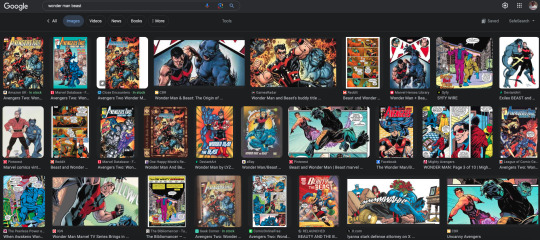
NOW.
I WILLL ADMIT THAT PERHAPS THERE IS SOME SEARCH ENGINE SKEWING GOING ON.
BUT.
THAT IS FAN ART OF GAY HANK AND SIMON ON ROW ONE, PEOPLE.
The cover for the issue with the kiss is row two!
The kiss itself is row three!
Like, full disclosure, I have absolutely Googled 'Wonder Man Beast kiss before', to get the panel to talk about my thoughts on Hank's sexuality before, so maybe there's some stuff going on, but, friends, Google 'Wonder Man Beast' and tell me what YOU see, because I am curious.
But for real, let's talk about this TPB.
Read this product description.
"Learn more about Wonder Man, the energy-powered Avenger who doubles as a movie star, before and after the release of the Disney+ series!
Few heroes in the Marvel-Verse are more wondrous than Wonder Man and none is a bigger draw at the box office! Get to know Simon Williams, the world’s greatest Avenger-turned-movie star, beginning with his momentous debut - in which he is gifted amazing power, but must defeat Earth’s Mightiest Heroes in exchange! Will he go bad, or make a heroic sacrifice? Don’t count Wonder Man out just yet!
Soon he’s back, breaking into Hollywood and tussling with heavyweights like the Sandman and the Abomination! But who needs enemies when you can have a best friend like Hank McCoy, the bouncing, blue-furred Beast? Prepare to discover why Simon and Hank are the greatest double act in Avengers history!"
I should remind you, this is not the Beast and Wonder Man book, that is a SEPARATE collection. A separate collection with art that has been HALVED to make THIS collection's cover, I know that Nick Bradshaw art anywhere.

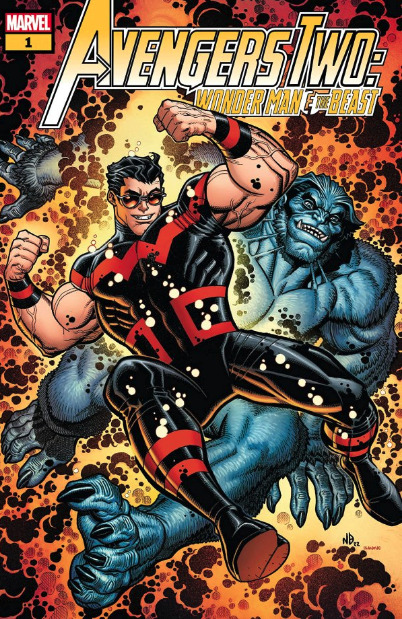
But let's also talk about the issue selection!
"Avengers (1963) #9" - makes sense! His very first appearance, his villain turn, his death. You HAVE to include the origin issue, it's the law. 5/5, perfect choice if you want to know what Simon is.
"Wonder Man (1986) #1" - first issue of his first solo series! Absolutely makes sense, fun little one-off thing that shows how Simon is adjusting after his hero turn, shows off his personality, self-contained, beautiful. 5/5, excellent choice.
"West Coast Avengers (1985) #25" - fun little story showing off his movie career and his up and down relationship with fame! And it doesn't rely too much on other continuity, you can just pick it up and go and have fun, even if the other Avengers parts might confuse you a bit. 4/5, good choice, a bit of a deep cut.
"Avengers (1998) #14" - awright, let's pull this one up and have a look. What is this issue actually about?
Our cover.
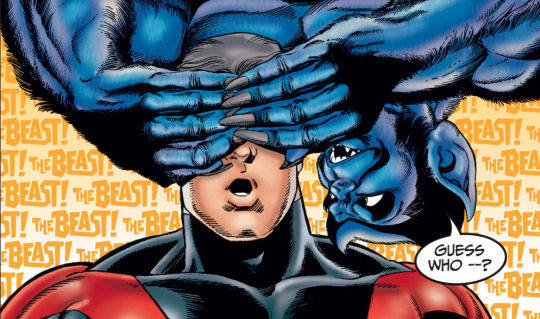
Hmm. Well, they seem like good friends!
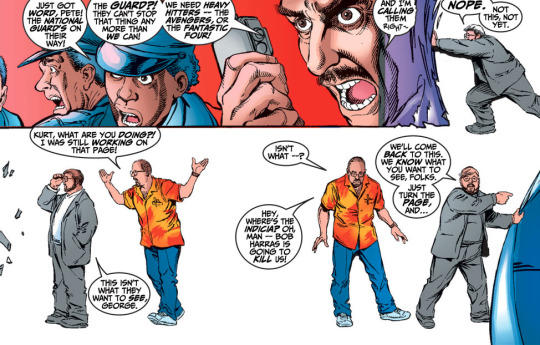
Aw, cute! I love when comics break the fourth wall like this, I wonder what they have in store for us.
Oh! A . . . two page spread of, Hank . . . shouting, "Hi honey, I'm home!"

Looking a little demented, there, Hank, you okay?
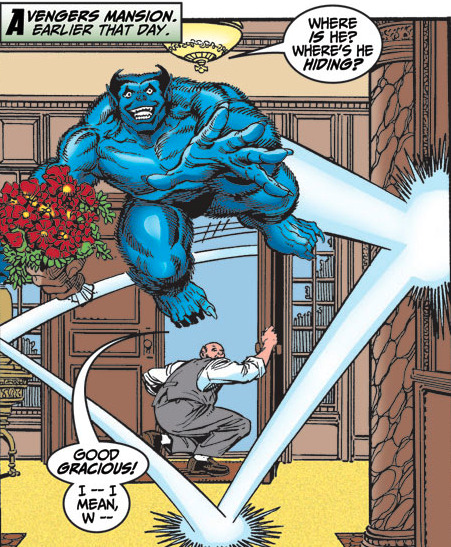
. . . Hank? You . . . okay there?
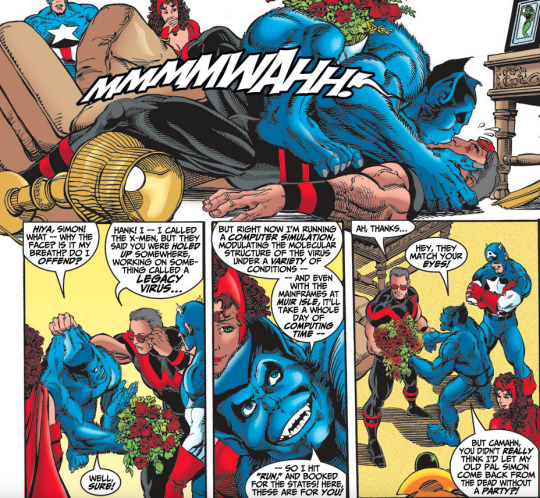
. . . Huuuuuuuuuuuuuuh.
You - got him flowers, Hank?

H-Hank, you're . . . wearing, Simon's, old . . . safari jacket . . ?
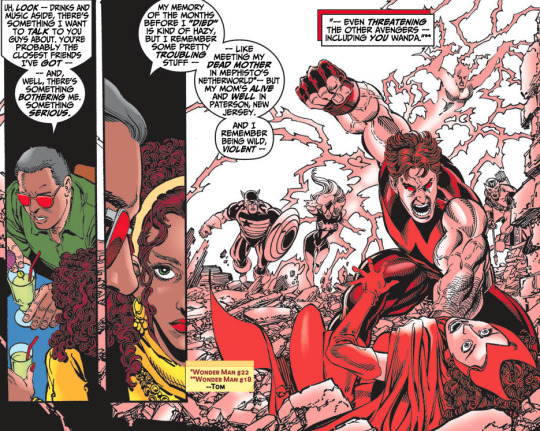
So, there IS some Simon only stuff in here, which is good, and catches you up on some of the events of his other solo series, which is good! This is good Simon content! Okay, cool!

O-Oh.

Chickenplucker?
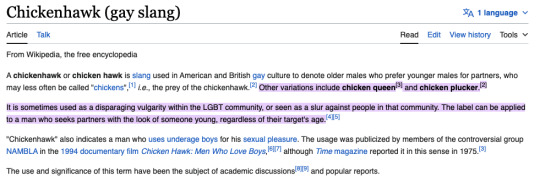
FUCKING WHAT.
Okay, we need to check another website, there's NO WAY.


THAT is the issue you chose?
THAT ONE?
Not A+X #12?

No, wait, shit, we're trying to beat the allegations.
Um. Um. What about, what about that one Avengers Annual?

SHIT, ABORT, ABORT.
Uncanny Avengers #28! That's good, wholesome fun, right?
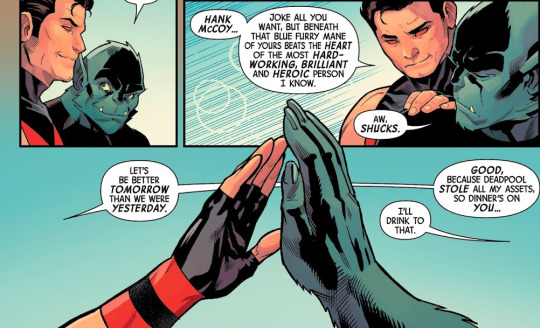
FUCK. FUCK, FUCK ME, GODDAMN IT.
What about - what about Wonder Man vol. 2 #6? That's safe, right?
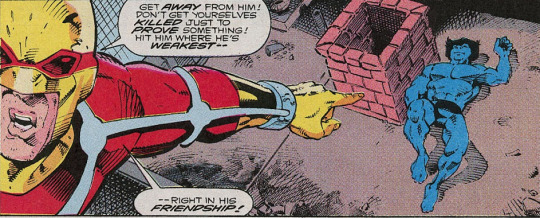
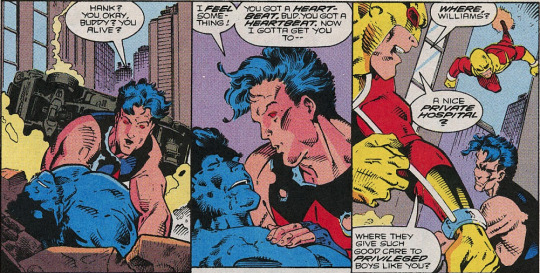
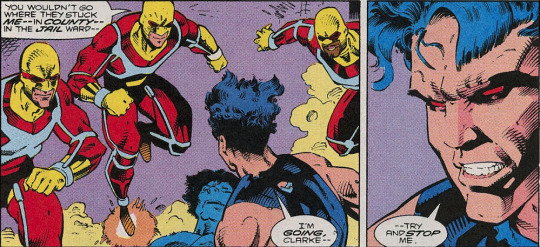
And at this point, the poor Marvel staffer gave up and said, FUCK IT, THE GAY KISS IS LESS GAY THAN THE REST OF THIS SHIT.
Like, come the fuck on, now.
But no, that's the reason why that issue is in there.
Because it's somehow less gay than every other interaction they've had.
I have no idea if it's intentional, but how has every single writer since 1981 managed to write these two like tender hearted lovers? Why does Simon at his most asshole in Wonder Man vol. 2 act like Hank is his personal damsel in distress and smile more at him than he does his girlfriends? It's not impossible to write male friendships in a non-gay way, it really isn't, and yet.
You keep.
Managing.
To make it like this.
Hank McCoy is bisexual and in love with Simon Williams. Whether he, or the writers, have realised it, THAT is the story they have managed to tell. Maybe one day they'll catch up.
Maybe one day soon, if they're smart.
10 notes
·
View notes
Text
Unyielding Spirit: Why The Pursuit of Happyness is a Must-Watch Masterpiece
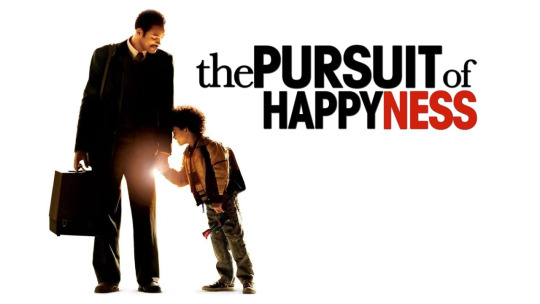
The Pursuit of Happyness is a heartwarming and deeply inspiring film that resonates with audiences through its powerful portrayal of perseverance, determination, and the human spirit's unyielding resilience. Directed by Gabriele Muccino and released in 2006, the film is based on the true story of Chris Gardner, a struggling salesman who faces insurmountable challenges in his quest to provide a better life for himself and his young son.
Box Office Collection
The movie was a commercial success, grossing over $307 million worldwide against a modest budget of $55 million. The film's strong performance at the box office is a testament to its universal appeal, as it struck a chord with audiences across different cultures and backgrounds. Its success was also fueled by positive word-of-mouth and critical acclaim, making it one of the most memorable films of the year.
Popularity
The Pursuit of Happyness gained widespread popularity for its moving story and the exceptional performances of its cast. The film's relatability and emotional depth helped it gain a lasting place in the hearts of viewers. Over the years, it has remained a favorite for many, often cited as a must-watch for those seeking motivation or a reminder of the power of perseverance. The film's popularity also extends to television broadcasts, streaming platforms, and home video sales, where it continues to find new audiences.
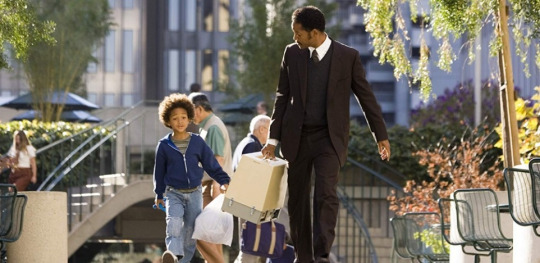
Star Cast
Will Smith delivers a career-defining performance as Chris Gardner, capturing the character's struggle, determination, and love for his son. Smith's portrayal earned him an Academy Award nomination for Best Actor and solidified his reputation as one of Hollywood's most versatile and talented actors.
Jaden Smith, making his acting debut, plays Christopher Gardner Jr., Chris's young son. Despite his age, Jaden delivers a mature and heartfelt performance, perfectly complementing his real-life father's role.
Thandie Newton plays Linda, Chris's wife, who eventually leaves him due to the pressures of their financial struggles. Newton’s portrayal adds complexity to the story, highlighting the strain that economic hardship can place on relationships.
The Message
The core message of The Pursuit of Happyness is one of hope, determination, and the relentless pursuit of one's dreams, no matter the obstacles. The film emphasizes that success is not defined by wealth or status but by the effort and persistence one puts into overcoming challenges. It also sheds light on the harsh realities of poverty and homelessness, particularly in the context of the American Dream, while also offering a powerful message about the importance of family and the sacrifices parents make for their children.
Chris Gardner's journey from being homeless to becoming a successful stockbroker is a testament to the idea that no matter how bleak the circumstances, with enough determination and hard work, anything is possible. The film also encourages viewers to cherish their loved ones and to remain hopeful, even in the darkest of times.
Why Everyone Should Watch It
The Pursuit of Happyness is more than just a movie; it's an emotional and motivational experience. It teaches valuable life lessons about resilience, the importance of never giving up, and the power of a positive attitude. Will Smith's performance, coupled with the real-life story of Chris Gardner, makes the film both inspiring and relatable.

Whether you're facing personal challenges, seeking motivation, or simply looking for a movie that will move you emotionally, The Pursuit of Happyness is a must-watch. It serves as a reminder that success is not guaranteed, but the pursuit of happiness is a journey worth taking, no matter the odds. The film's emotional depth, powerful message, and stellar performances make it a timeless piece of cinema that resonates with viewers of all ages.
Read the original book from which the movie was inspired
The Pursuit of Happyness (US)
The Pursuit of Happyness (IN)
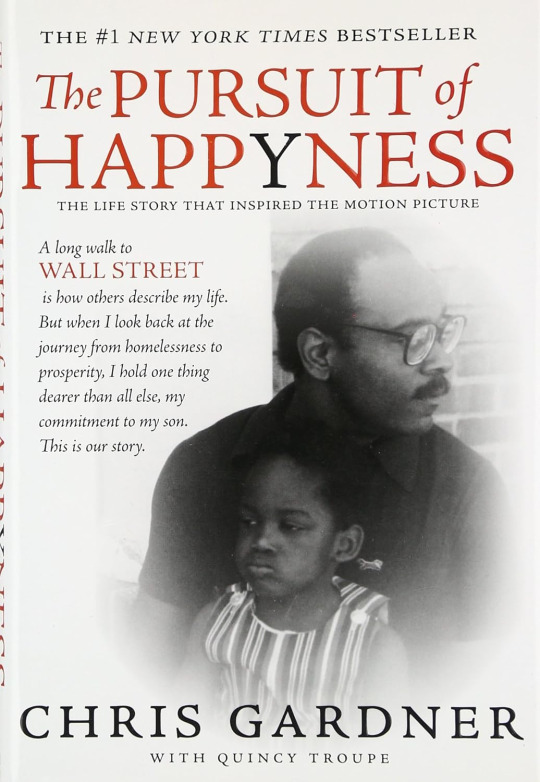
#top movies#pursuit of happiness#happiness#hollywood#will smith#chris gardner#movies#best selling books#most watched
2 notes
·
View notes
Text

Zoe Saldana stars in "Guardians of the Galaxy Vol. 3"SOURCE: MARVEL
That’s not to say Marvel — along with all studios and streamers — doesn’t face some hurdles going forward. But the nature of those obstacles for Marvel are frankly pretty obvious; it’s mostly things Marvel has overcome before; and regardless of those issues and the need to address them, Marvel is still actually doing pretty good right now even amid the problems they’ve had.
So let’s just unpack what’s really going wrong, and what it means for Marvel Studios.
The situation with actor Jonathan Majors — the star of several Marvel films and streaming shows, as the MCU’s time-traveling villain Kang the Conqueror — is that he faces multiple accusations of abuse, and is scheduled to stand trial for one recent case. After that case was initially reported, other accusations surfaced, as did previous public statements from years ago by performers who asserted accusations of abuse were already circulating about Majors.
So yes, Marvel will almost certainly recast Kang. Lucky for Marvel, the character literally exists across a near-infinite number of alternate realities where he takes different forms and changes appearance. Likewise, Marvel has had to recast characters in the past, just like lots of other franchise or TV/streaming series. This isn’t brain surgery, and the framing of this issue as something that could sink Marvel’s whole future plans is frankly nonsense.
Just one great example, Marvel could offer the role to John Boyega (who I’d argue should’ve been the top candidate for the role in the first place). Or maybe Denzel Washington as an iteration of Kang who sat out the in-fighting and collective efforts of the rest of the Kangs and grew older and wiser as he made his plans to take over. Or maybe Ray Fisher could be offered the role, if Marvel wants to poke DC and WBD while scoring a great casting option.
MORE FOR YOU
Apple Finally Kills Its Awkward MacBook Pro
Zero Punctuation Ends As The Escapist Faces Mass Resignations After EIC Firing
Ukraine’s American-Made M-1 Tanks Have Reached The Front Line
Or perhaps Marvel could offer the role to Leslie Odom Jr., Lakeith Stanfield, O'Shea Jackson Jr., Daveed Diggs, Stephan James, or any number of other fantastic casting choices to take over the role of Kang in the MCU.
Forbes Daily: Get our best stories, exclusive reporting and essential analysis of the day’s news in your inbox every weekday.Sign Up
By signing up, you accept and agree to our Terms of Service (including the class action waiver and arbitration provisions), and you acknowledge our Privacy Statement.
The point is, the worst part of the situation with John Majors is if the allegations are true and women suffered this abuse while Hollywood ignored it. The casting “problem” is small potatoes by comparison, and is easy to solve.
So let’s look at the financials now, since a central claim to the “Marvel is in trouble” narrative is that the studio is struggling at the box office while streaming is an unpopular mess.
At the box office, it’s true Marvel hit a high point with their back to back releases of the two-part Avengers conclusion to the Infinity Saga. The $2.79 billion from Endgame and $2 billion from Infinity War elevated the final global gross for all 22 films in that saga to more than $20 billion, for a per-film average of around $935 million.
In 2018 and 2019, the MCU put up the following numbers: Black Panther hit $1.34 billion, then Infinity War topped $2 billion, then Captain Marvel scored $1.1 billion, and then Endgame took $2.79 billion. Ant-Man and the Wasp at $622 is the only MCU film in those 24 months that failed to top $1 billion.
Since the Infinity Saga ended, Marvel’s releases have taken north of $8.1 billion across 10 movies so far, with a Multiverse Saga per film average of about $815 million. The difference between $815 million and $935 million is not insignificant, but nor is it disastrous, and it’s certainly not hard to understand why it’s happening.
The 2018 and 2019 slates for the Infinity Saga benefited from a decade of build-up, and it was those last four (out of five total) blockbusters topping $1-2 billion each that provided the final heft and resulted in an even higher per film average. We are only in the first half of the Multiverse Saga to date, and so far we haven’t had a single Avengers movie in this new saga, while as noted the Infinity Saga ended with a one-two Avengers punch good for more than $2 million per film.
And then the fact of the Covid pandemic alone accounts for most of the rest of the downturn in Marvel Studios’ average box office performance. Even during the Covid pandemic, when films were flopping or going straight to streaming/PVOD, Marvel’s three releases that performed “badly” due to the global health crisis still managed to finish between $379.7 million on the lowest end and $432 million. That’s better than the DCEU can perform even after theaters reopened and box office started its climb back toward something resembling “normal” — at least for the right films, since 2023 has been a roller coaster ride for theatrical.
Ant-Man and the Wasp: Quantumania underperformed earlier this year and wound up the weakest performer of that franchise at $476 million, but Guardians of the Galaxy Vol. 3 scored blockbuster results with $845.5 million.
Indeed, Vol. 3 is currently the fourth-highest grossing movie of 2023, both domestically and worldwide. And for the record, as disappointing as its box office was, 2023 has been so cruel to theatrical releases that Quantumania is still a top-10 box office performer.
We’ve seen one would-be blockbuster tentpole after another face-plant or otherwise disappoint, and often when a tentpole has managed a healthy box office performance it’s at a more moderate level than expected or typically enjoyed by the given franchise and/or its prior financial trajectory.
Other than Barbie, The Super Mario Bros. Movie, Oppenheimer, and Guardians of the Galaxy Vol. 3, nothing else truly put up top-tier results this year. Fast X topped $700 million, but is fourth film in a row from the series to suffer a decline from its predecessor’s box office gross, and the lowest box office for the franchise since 2011’s Fast Five, so it’s a mixed bag there.
Besides that, 2023 saw three films in the $500-600 millions range, four in $400 millions territory, and a couple of $300 millions.
The makeup of the top 10 this year looks like this: Barbie, The Super Mario Bros. Movie, Oppenheimer, Guardians of the Galaxy Vol. 3, Fast X, Spider-Man: Across the Spider-Verse, The Little Mermaid, Mission: Impossible - Dead Reckoning Part One, Elemental, Ant-Man and the Wasp: Quantumania.
Notice, there are three Marvel superhero movies in the top 10. Yes, one of them underperformed, but the point is that it seems silly to talk as if audience are in any widespread or large scale way turning away from superhero cinema, or that Marvel is somehow reeling from a downfall and have lost control.
The Marvels is currently tracking toward a shockingly low debut this weekend, with most projections pointing to a $130-$150 million global opening. Without at least average holds, the film could struggle to get past $300-400 million. On the other hand, I think tracking has proven pretty unreliable these days, and I believe a significant part of these disappointing numbers is the fact a lot of people are confusing this film with being another new Disney+ Marvel show, or think it is coming to Disney+ as a film soon. There’s also the general 2023 ongoing curse to consider.
But regardless, The Marvels should’ve been a home run sequel. While we can point to the unethical shenanigans and toxic behavior of fans and of certain organized hateful online voices obsessed with attacking women-driven movies or shows, if this film flops or underperforms rather than merely suffering a downward adjustment consistent with the genre overall (which would mean a box office for The Marvels in the $700 million range, I’d say), then it’s entirely fair to call it a big stumble for the studio.
The large-scale tainting of superhero cinema by the DCEU’s overarching failure the past several years (eight films in a row across five years, all failing to reach $400 million and averaging in the roughly $250 million range) coinciding with the Covid pandemic and theatrical downturn, coupled with a leveling off — not uncontrolled free-fall or any other hyperbolic situation — of Marvel’s must-see “event” status in the aftermath of their 11-year Infinity Saga’s conclusion (and lack of any Avengers team-ups for four years and counting) has no doubt reduced the dominance of the superhero genre and audience’s previous high-level anticipation.
But that sort of heightened “event” status is impossible for any franchise or genre to maintain, and no serious person expected the genre or any one studio’s piece of it to be some perpetual ever-increasing profit machine
Neither Marvel nor the genre in general need to treat the usual ebb and flow of primacy in entertainment as if it’s some major crisis threatening the existence and profitability of the studio or genre. That’s just the natural clickbait mentality driving entertainment journalism. We should be able to report on and assess such situations without resort to exaggerated portrayals for melodramatic purposes, nor parrot claims from those with obvious incentives and ulterior motives behind any of that sort of hyperbolic claims. We know better, but that doesn’t mean the profession behaves better, and so we get clickbait and studio drama delivered up like silly reality TV, and everyone pretends not to recognize it as the nonsense it usually is.
Marvel has to recast a major lead actor, something we’ve seen plenty of times by studios and projects, including literally by Marvel themselves on more than one occasion. Marvel’s first two films of 2023 grossed a combined $1.3 billion in box office. Even if The Marvels only does about half the box office of Captain Marvel — a vastly bigger drop than the Ant-Man franchise experienced, but let’s just use a 50% dramatic decrease to make the larger point — the MCU will have grossed a total of about $2.45 billion for 2023, an average of $815 million per film.
If that figure sounds familiar, it’s because I mentioned it earlier since it’s the per-film average for the MCU ever since the end of the Infinity Saga. Marvel settled back a bit from the high per-film average of $935 million, and for four years we’ve consistently seen this same new average level of performance for their films. Again, not insignificant as a drop, but in context it’s easier to understand and recognize as not a sudden emergency situation, and I suspect most studios would be happy if they could average north of $800 million per film on average every year.
And let’s face it, once the latest Avengers movies hit the radar, we’ll see the average per film gross go up during those years, just like always, and in the long run if the two scheduled Avengers movies play at the $2 billion level, that will actually result in an increase in the final average per-film gross for the Multiverse Saga, just as those huge Avengers box office grosses at the end of Infinity Saga seriously raised the saga’s per-film average.
This is all fairly predictable, within an obvious margin of error but not frankly too far of deviation. Which doesn’t negate the fact of the downturn in average performances, but rather puts it into less histrionic perspective as solvable problems for a still overwhelmingly successful studio that’s seeing per film averages still far superior to what any other studio can claim.
On streaming, where audience trends and preferences have likewise evolved during the Covid era, Marvel
First we got the ABC broadcast series: Agents of S.H.I.E.L.D., Agent Carter, and Inhumans. Want to take a moment to recall how did those all fair with audiences and critics?
Then came Netflix's slate, with Daredevil, Jessica Jones, Luke Cage, Iron Fist, The Defenders, and The Punisher — half of those got mostly good or great reviews, a couple got mixed to negative reviews, and along the way different seasons of a given show had their ups and downs. Many fans and reviewers bemoaned the general lack of tie-in to the cinematic releases, a point that's amusing in light of how the same reviewers and fans completely reversed course a few years later to bemoan the fact the newer MCU shows often try to tie in to the MCU.
So next up are The Runaways and Cloak and Dagger, shows with younger casts and less direct connection to the rest of the MCU, but both were short lived and appeared on two different streaming services.
Which brings us to the MCU shows on Disney+, overseen by Marvel Studios itself and consisting of WandaVision, The Falcon and the Winter Soldier, Loki, What If...?, Hawkeye, Moon Knight, Ms. Marvel, She-Hulk: Attorney at Law, and Secret Invasion.
While The Falcon and the Winter Soldier and What If...? received mixed reactions, WandaVision and Loki got generally good to great reviews, as did Hawkeye and Moon Knight.
Ms. Marvel likewise received strong positive reviews, aside from resentful fans mostly motivated by racism or sexism who bashed the show (the same way angry bigoted fans harassed Brie Larson and tried to manipulate online reviews for Captain Marvel, and to this day engage in bizarre conspiracy theories pretending movies with women leads are secretly propped up by studios buying up tickets), and the same mob of boys and men perpetually upset that everything isn’t just a mirror reflecting themselves were incensed that She-Hulk dared make fun of them for being immature, bigoted, and all-around goofy.
Granted, She-Hulk did often have what looked like rushed and unfinished CGI, but it was also still miles ahead of most TV CGI and it didn’t detract from the entertainment value of the show and was generally fine. (Yes, plenty of folks just didn’t enjoy these shows, and I’m sure it’s entirely a coincidence that for many of them it always happens to be women-led shows that bother them or are declared “meh”).
Secret Wars is the most recent new MCU show (besides a new season of Loki), and it got mixed reviews that lean mostly positive but still point to trouble in the decision-making to develop the series, questions about
The point of all of this is, Marvel’s had a lot of superhero shows for a long time during the reign of the MCU, and the shows have tended to mostly get good or great reviews, while often suffering complaints of inconsistency in tie-ins vs stand-alone abilities, or iffy VFX, or questions about who is in charge and why certain decisions were made. Sound familiar? It should, because it’s a broken record of reality at this point, the sort that gets mentioned as if it’s a new development any time someone is pushing the latest version of the “sky is falling” narrative.
Not that there aren’t issues needing solutions. The budgets are too high, and Marvel — like many streamers — is discovering it’s simply not sustainable to spend $20 million or more per episode with rushed production schedules and increasingly unreasonable demands on VFX workers.
But the shows themselves are so far working and working pretty well, if you aren’t focused entirely on social media debates and media exaggerations. Most every MCU show on Disney+ has enjoyed positive reception from critics and viewers, enjoying good (and sometimes record-setting) viewership. Fixing the problems for the Marvel streaming plans is not really any more difficult than fixing the theatrical issues, because it’s easy to identify the problems, easy to see where the problems arose, and easy to see what is necessary to end those problems.
Nobody foresaw the Covid pandemic (or at least the extent of it) or the utterly shameful, failed public health response it elicited from governments and organizations that are paid and entrusted to prevent or deal with such crises. Marvel was caught off guard like every studio, Marvel suffered the same box office downturn as every studio, Marvel leaned into streaming like every studio, and Marvel is now having to make adjustments to adapt to the still-evolving environment theatrically and in streaming.
So media and fans and others in Hollywood pretending this is some shocking, Marvel-specific situation are making disingenuous claims, and they should know better. Most probably do, but the truth is more boring than doomsaying — and with everything else in the world falling apart, clickbait and hyperbole are the best way to get attention for entertainment news during a drought (caused by few new films/shows releasing, and the likelihood of strikes dragging into next year because studios put money toward bonuses, yachts, and private jets rather than pay artists, writers, and performers living wages from a fair share of the revenue they generate).
Marvel will recast Kang, they’ll reduce the number of shows and films in production at a given time, they’ll get budgets under control and allow more time for VFX work, and they’ll refocus on the approaches and measures that worked so well in the past to determine which projects to greenlight and how to return to the sense of a big shared world the Avengers have to team up to save.
Luckily, with the X-Men and Fantastic Four reboots around the corner, Marvel has a couple of big teams with lots of potential for precisely the sort of storytelling Marvel does best at the blockbuster level. They could even simply move toward a post-Secret Wars setup that lets Fantastic Four, X-Men, and a handful of other existing popular franchises carry the Marvel brand forward for a while.
We will also probably see the temporary return of Robert Downey Jr., Chris Evans, and Scarlett Johansson reprise their popular MCU roles for Avengers: The Kang Dynasty and/or Avengers: Secret Wars.
And looking at the upcoming slate, it’s not hard to see there’s plenty of reason to feel confident Marvel will continue to enjoy success, even if it’s at a slightly moderated level due to the myriad factors we’ve discussed, including the idea that superhero genre films are settling into a more consistent long-term level of popularity and performance from now on.
The next four years brings Deadpool 3, Captain America: Brave New World, Thunderbolts, Blade, Fantastic Four, Avengers: The Kang Dynasty, and Avengers: Secret Wars, and at some point thereafter Armor Wars and the X-Men. Of these films, the two Avengers movies are likely to be blockbuster hits, as is Deadpool 3. Captain America: Brave New World is an established franchise, lacking the original series lead but with a continuing cast and brand that I think are enough to avoid any significant downturn in box office, even if we see some drop from the peak levels of the Infinity Saga.
Blade and Thunderbolts are the riskier properties here, but the former is a previously successful cinematic brand and the latter is a team-up movie including some recognizable characters and stars. Still, this is where we might see more underperformances. Fantastic Four could likewise either perform at a blockbuster levels, or might wind up in the $700 million range, but as a key property getting lots of attention and must-work oversight, I think it’ll avoid being a problem.
Armor Wars as an extension of the Iron Man movies — and possibly/probably coming after we see Robert Downey Jr. again in some Avengers action — should perform well, and X-Men is a known successful brand getting an MCU reboot and polish as a big team franchise including younger cast members, so I think it’ll at least be capable of playing at the Guardians of the Galaxy level, if done right.
This isn’t a debacle, it’s not doomsday, and Marvel isn’t in disarray. The internal difficulties they’ve faced are frankly typical and easy to identify and solve, as much as everything else we’ve discussed here. The bottom line is this: we’ve seen Marvel Studios kick off with a big hit in Iron Man and an outright flop with The Incredible Hulk, after which Captain America: The First Avenger and Thor performed at okay levels but didn’t set the box office on fire by any stretch.
We got the original Avengers movie off the strength of Iron Man and Iron Man 2, and to really help put this into perspective I’ll point out the average per film box office of Phase One was $634 million. Phase Two’s per film average was $876 million.
Marvel worked hard to build what they created, and it’s a tremendous historic success full of ups and downs that so far have ultimately maintained an impressive level of successful across a large slate of films and series. To look at this history, this math, and think Marvel Studios is in deep trouble, struggling, or never really was very good to begin with, is unreasonable and contrary to the data and any serious considerations.
10 notes
·
View notes
Text
Joan Crawford - The Hollywood Glamor Girl








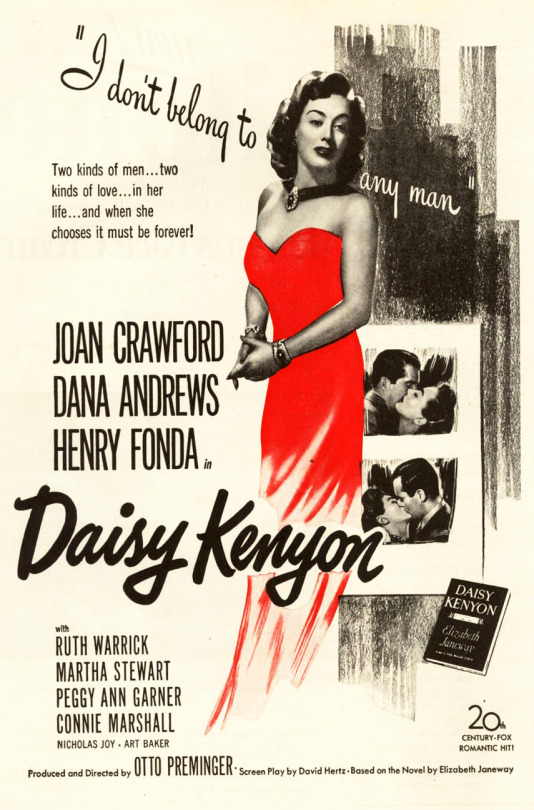



Joan Crawford (born Lucille Fay LeSueur in San Antonio, Texas on March 23, 1906) was an American actress remembered today as the quintessential "Hollywood Glamor Girl."
Of French-Huguenot and English ancestry, she joined dance contests, one of which landed her in a chorus line. Before long, she was in Broadway. By 1925, she was on her way to Hollywood for a contract with MGM. Her first role came soon after - as the body double for Norma Shearer, MGM's most popular female star. The studio saw her potential, but disliked her name, so they ran a contest, "Name the Star," in Movie Weekly.
Crawford made several silent films and had continued success in talkies after working very hard to remove her Southern accent. Even though she remained a respected and profitable actress at MGM, her popularity declined in the 1940s, so she requested to be released and immediately signed with Warner Bros.
Warner Bros. gave her a chance to show her range and revived her career with movies like Mildred Pierce (1945). Like before, she asked to be released from her contract in 1952. She continued to work freelance and became actively involved with Pepsi-Cola Co. through her marriage to the company's president. Her career came to a lull again mostly because of the lack of roles for older women. By the 1960s, she again had a transformation and became her own PR machine, with a new script, Whatever Happened to Baby Jane? (1962). It was a hit and led to a string of roles until she retired in 1970.
At 69, she died from a heart attack in her apartment in Manhattan. Shortly after, it was revealed she paid for the medical care of hundreds of people, many of whom were from the film industry. She never publicized these nor wanted the public or patients to know.
Legacy:
Won the Academy Award for Best Actress for Mildred Pierce (1945) and nominated twice more: Possessed (1948) and Sudden Fear (1953)
Won the National Board Review Best Actress for Mildred Pierce (1945)
Nominated for a Golden Globe Best Actress for Sudden Fear (1953)
Nominated for the 1964 BAFTA Award for Best Foreign Actress
Named as one of the WAMPAS Baby Stars in 1926
Won the Photoplay Awards - Best Performance of the Month in August and September 1928, the 1951 and 1953 Most Popular Female Star
Honored with a block in the forecourt of Grauman's Chinese Theatre in 1929
Listed by the Motion Picture Herald as one of America’s top-10 box office draws from 1930 to 1936
Was the vice president of the Motion Picture Relief Fund in the 1930s
Proclaimed the first "Queen of the Movies" by Life in 1937
Donated her entire salary from donated her entire $112,500 salary from They All Kissed The Bride (1942) to charities in memory of Carole Lombard
Won the Golden Apple Award twice as Most Cooperative Actress in 1945 and 1946
Won the Golden Laurel for Top Female Performance for Sudden Fear (1953) and Torch Song (1954)
Received the first Golden Shutter Award in 1955 from the LA Press Photographers Association
Served in the Board of Directors of Pepsi-Cola Co. from 1959 to 1973
Given the Variety Club of Philadelphia's Variety Club Award in 1960
Co-wrote two autobiographies, A Portrait of Joan (1962) and My Way of Life (1971)
Honored with City of Hope Award in 1963 and the Heart of the World Award in 1965 by City of Hope Hospital
Named by the United Service Organizations as the first "Woman of The Year" in 1965
Sponsored the Joan Crawford Dance Studio in 1965 and the Joan Crawford Awards Collection in 1966 at Brandeis University
Became a Brandeis University Fellow in 1967
Presented with the Cecil B. DeMille Award at the 1970 Golden Globe Awards
Was the national chairwoman of the American Cancer Society in 1972
Appeared in the "Legendary Ladies" series at The Town Hall in 1973
inducted in the Photoplay Awards Hall of Fame in 1977
Depicted in her daughter's memoir, Mommie Dearest (1978), which was turned to a film in 1981
Is the namesake of a 1981 song by Blue Öyster Cult
Featured in the 1989 book Bette and Joan: The Divine Feud, the basis for the 2017 show Feud: Bette and Joan
Ranked #47 in Entertainment Weekly’s 100 Greatest Movie Stars of All Time in 1998; #93 in Premiere magazine’s 100 Greatest Performances of All Time in 2006 for Mildred Pierce (1945)
Named the 10th-greatest female star of classic Hollywood cinema in 1999 by the American Film Institute
Inducted in the Online Film and Television Association Hall of Fame in 2005
Ranked 84 in Playboy's "100 Sexiest Women of the 20th Century" in 2012
Honored as Turner Classic Movies Star of the Month for January 2014
Has a star on the Hollywood Walk of Fame at 1752 Vine Street for motion picture

#Joan Crawford#Lucille LeSueur#Hollywood Glamor Girl#Hollywood Glamour Girl#Mommie Dearest#Mildred Pearce#Silent Films#Silent Era#Golden Age of Hollywood#Film Classics#Old Hollywood#Vintage Hollywood#Hollywood#Movie Star#Hollywood Walk of Fame#Walk of Fame#Movie Legends#movie stars#1900s#28 Hollywood Legends Born in the 1900s
5 notes
·
View notes